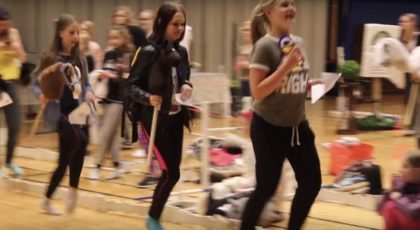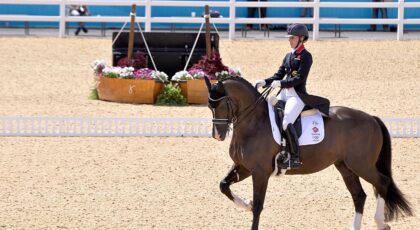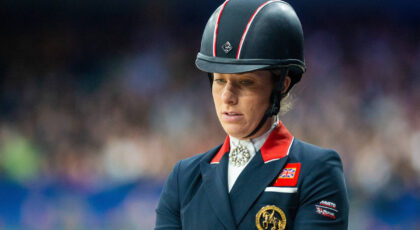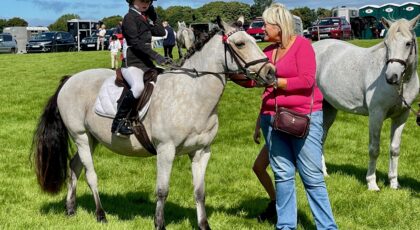Remember that ridiculous Monty Python comedy sketch “The Ministry of Silly Walks”? It has inspired all manner of copycat moments over the years, and while this might be neither the time nor the place to debate whether laughter is indeed the best medicine, it is certainly fair to address the fact that little has been said about how silly walks can have a positive influence on the seat of a rider.
But they can!
Here’s why: You can only indulge in such physical antics as John Cleese’s character in the silly walk sketch if you have terrific balance. And yes, that is the connecting piece! We rely on educated and athletic balance every time we ride our horses. In the book he wrote with Hannes Müller and Kerstin Niemann entitled “RIDER + HORSE = 1”, renowned movement-and-riding expert Eckart Meyners discusses the importance of balance as one of several coordinative abilities that form the basis for learning any movement, whether on the ground or in the saddle. And he prescribes several silly walks to help develop that balance—no, for real!

“
We can define balance as the most important ability. A person who is struggling for balance cannot pay attention to other movement requirements, and she is therefore limited in the saddle. Right from the start of a riding education, the rider faces many detailed movements and skill requirements (such as coordination of aids) within her own body and in contact with the horse. In the course of education, these requirements continue to increase. Consequently, the rider with an impaired sense of balance will have great difficulty coordinating her own body and cooperating with the horse.
Only when the rider is in balance as well as in rhythm is it possible for her to apply her riding skills (techniques and aids) since she can adjust to the horse and feel when she should use which aid. Both of their rhythms merge…. This creates a basis for being able to “feel” yourself into the horse’s movement, and to conduct a conversation with the horse that is as free from interference as possible, since coordinative abilities and skills are the language that riders use to communicate. It is essential for the rider to bring a well-developed feeling for balance and rhythm to the table in order to first, follow the horse’s movement, and later, influence this movement positively.
Since the rider is the one who removes the horse from his original environment and gets him out of balance by sitting on his back, it’s always the rider’s primary goal to restore the horse’s natural balance. This is the theme that is the “golden thread” throughout the entire schooling of the horse: In spite of the additional load presented by the rider’s weight, the horse must maintain his balance. In this context, it makes no difference whether we are talking about a young, inexperienced horse or an already schooled horse—that is, a horse unfamiliar with rider weight and aids, or one that already knows about aids and the rider’s influence. Not only at the beginning of schooling, but also at the beginning of each riding session, the main concern is that rider and horse can align themselves and find their natural rhythm during movement.
When a beginner starts her riding education, it makes little sense to confront her with the fact that she should ride her horse through the poll, give a correct canter aid, or flex and bend him to the inside during turns. This simply overwhelms her since she has not yet developed sufficient coordination. Instead, her influence can only be developed after she has learned to maintain balance and rhythm on a moving horse in all the gaits.
This mutual attunement, this harmonizing between rider and horse, should be the beginning of each riding session and always the goal of schooling at every level.
Here are a few easy ground exercises to help develop your balance and improve your performance on your horse:
• Walk with positional changes: on the heels (1), on the ball of the foot (2), on the outer edge (3), on the inner edge (4)
• Hop on one leg (5)
• Skip with high knees (a “skipping run”) while twisting back and forth at the waist (6-8)


”
This excerpt from “RIDER + HORSE = 1” was reprinted with permission from Trafalgar Square Books.



 June 3, 2017
June 3, 2017 




























